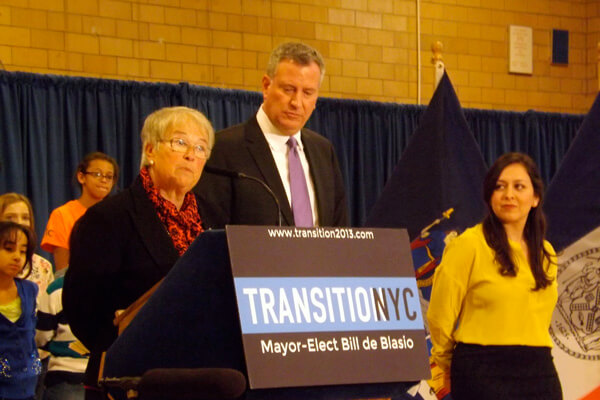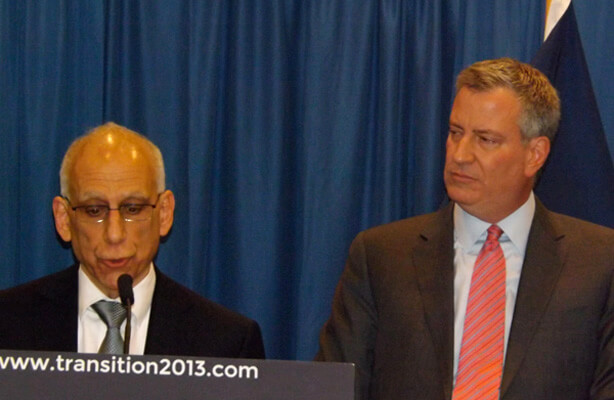BY NATHAN RILEY | Several million marchers have already vented their revulsion and damned Donald Trump, revealing an enthusiasm for resistance that could sustain a left backlash, while Trumpites are accusing the protesters of dividing the nation.
Beneath the bluster of administration officials, however, they are worried. His chief of staff, Reince Priebus, warned that it is an existential threat to “delegitimize this president,” while his press secretary denied that the crowd of Women’s Marchers was larger than the audience for the new president’s inauguration. Sean Spicer’s facts were false and immediately attacked by the media, though that’s a dynamic favored by this administration – make journalists debunk, and then use the debunking to prove the media is hostile and cannot be trusted.
The scary thought persists: it isn’t obvious that truth will win this argument.
THE LONG VIEW
In the aftermath of the Women’s Marches worldwide, the activists from Adbusters, whose postings helped sparked the 2011 Occupy Wall Street protests, issued this caution. Micah White called it an “enduring myth” that “if you can get enough people into the streets from diverse demographics, largely unified behind a clear message, then our representatives will be forced to heed the crowd’s wishes.”
The last time a Republican was in the White House, demonstrations didn’t work. While George W. Bush slammed the Dixie Chicks, a Southern country group, for opposing the military build-up in the Middle East, Mayor Michael Bloomberg did his part by denying anti-war groups permission to march. The NYPD authorized a gathering at the UN but professed it would be a security risk if they paraded. The crowd was larger than could fit into UN Plaza so it extended west as far as Third Avenue. Mounted cops forced the crowd off the avenue onto the sidewalk with the help of nightsticks and pepper spray. Monster protests rocked London and Rome the same day. The world demonstrated on February 15, 2003, and on March 20, the US invaded Iraq. The protests were more a ripple than a tide, and Bush was reelected the following year.
This year’s Inauguration offered a preview of life under Trump and his new “law and order” crowd. Masked protestors, who broke windows and set fire to limousines, face felony riot charges with harsh 10-year maximum sentences. A crackdown on protests started on the very first day of the new administration.
But the angry demonstrations that erupted within hours after the president banned immigrants have upped the ante, and offered hope that resistance will take hold. Perhaps Democrats and progressive will create a tea party of their own in reaction to Trump’s nasty indifference to human suffering. The politics are just starting to be felt, but it is crucial that organizers go into congressional district after congressional district to foment the opposition. Trump rules by a narrow margin: had Pennsylvania and Florida gone Democratic, the Donald would have lost, but Hillary Clinton’s victory would have been marred by Republican control of Congress in any event.
Beginning in 2009, the Tea Party forced Republicans to rigidly oppose Obama; now the early evidence is that popular anger is feeding a spirit of resistance among Democrats. The rapidity of the change is breathtaking.
This rebirth of progressive forces can yet make lemonade from the Trump debacle. For most state legislatures and even House seats, the path to nomination is open. A new candidate will not be unseating a center-left Democratic incumbent. This weakness offers openings to a new generation of candidates. Every candidate to become chair of the Democratic National Committee has pledged to organize in all 50 states. That represents a return to the strategy abandoned when Obama replaced Howard Dean as party leader.
The object isn’t conversion of Republicans into Democrats; the goal is shifting votes within a small group and energizing key left constituencies. The cost is small, but the stakes are huge. It requires that progressives take the fight into the battleground and even the red states.
It behooves the LGBTQ community and progressives groups to work with these grassroots organizers, especially in the search for candidates. In the past, Democrats elected from conservative states have created tensions within the party by adopting troubling positions on issues like mass incarceration, LGBTQ rights, and income and food security.
As the high-profile firing this week of Acting Attorney General Sally Yates makes clear, Democratic appointees hounded out of government service by the new Trump regime could just make for attractive candidates for office, especially those who hail from red states.
But the biggest advantage stems from the weakness Democrats currently endure. They are in opposition – they don’t have to defend this president. They can advocate new and daring policies and make old ones like single payer health care attractive to a broader public. There is an opportunity here to retire a stale playbook.
The Republicans will fight back. Trump has blown the dog whistle. Three million illegal voters did not vote against him, but the message is loud and clear – ramp up voter suppression. According to the president, Republicans must find a way to keep elections “honest” – which in practical terms means making it harder for people to vote.
Eric Holder, Obama’s first attorney general, understands this and is now focused on the issue of voting rights and redistricting. Democrats and progressives, especially those in blue states, need to contribute time, money, and expertise to improving the party’s standing in traditionally red states if they are to change the dynamic on issues they care about – such as LGBTQ rights, women’s health care, immigration reform, and climate change. Resources – from both party organizations and advocacy groups – must be redirected from national lobbying to local elections.
The left, particularly the Green Party, knows this – they are fielding an unprecedented numbers of new candidates for office everywhere. Will the Democrats keep up?


































